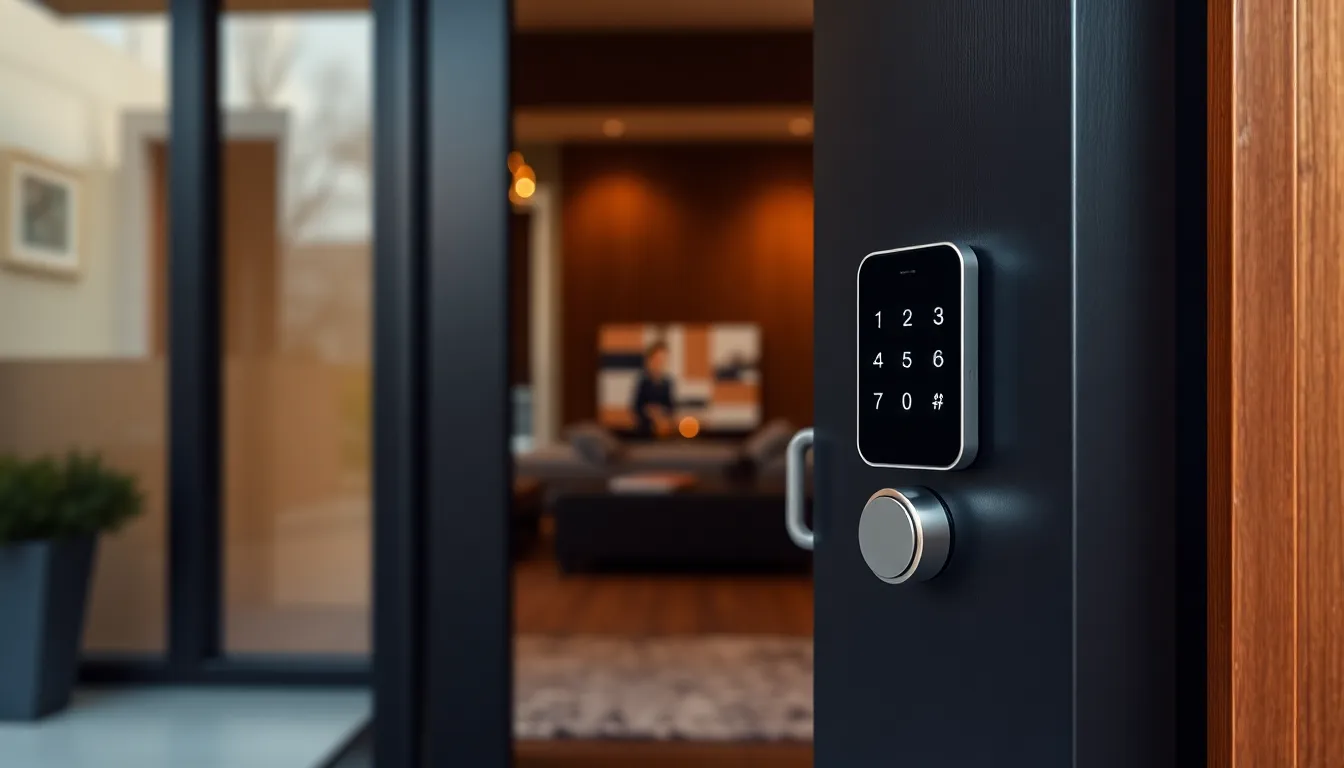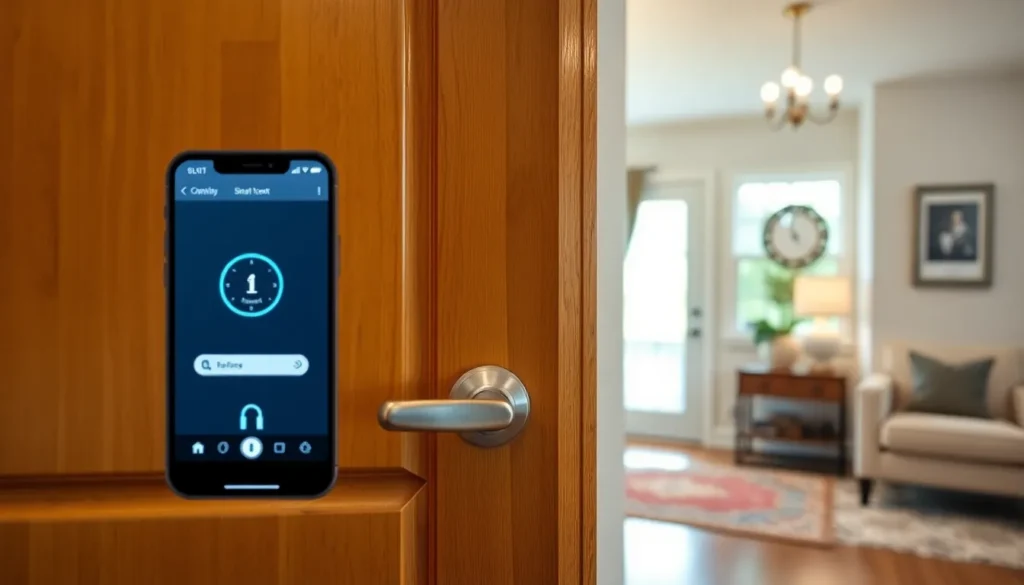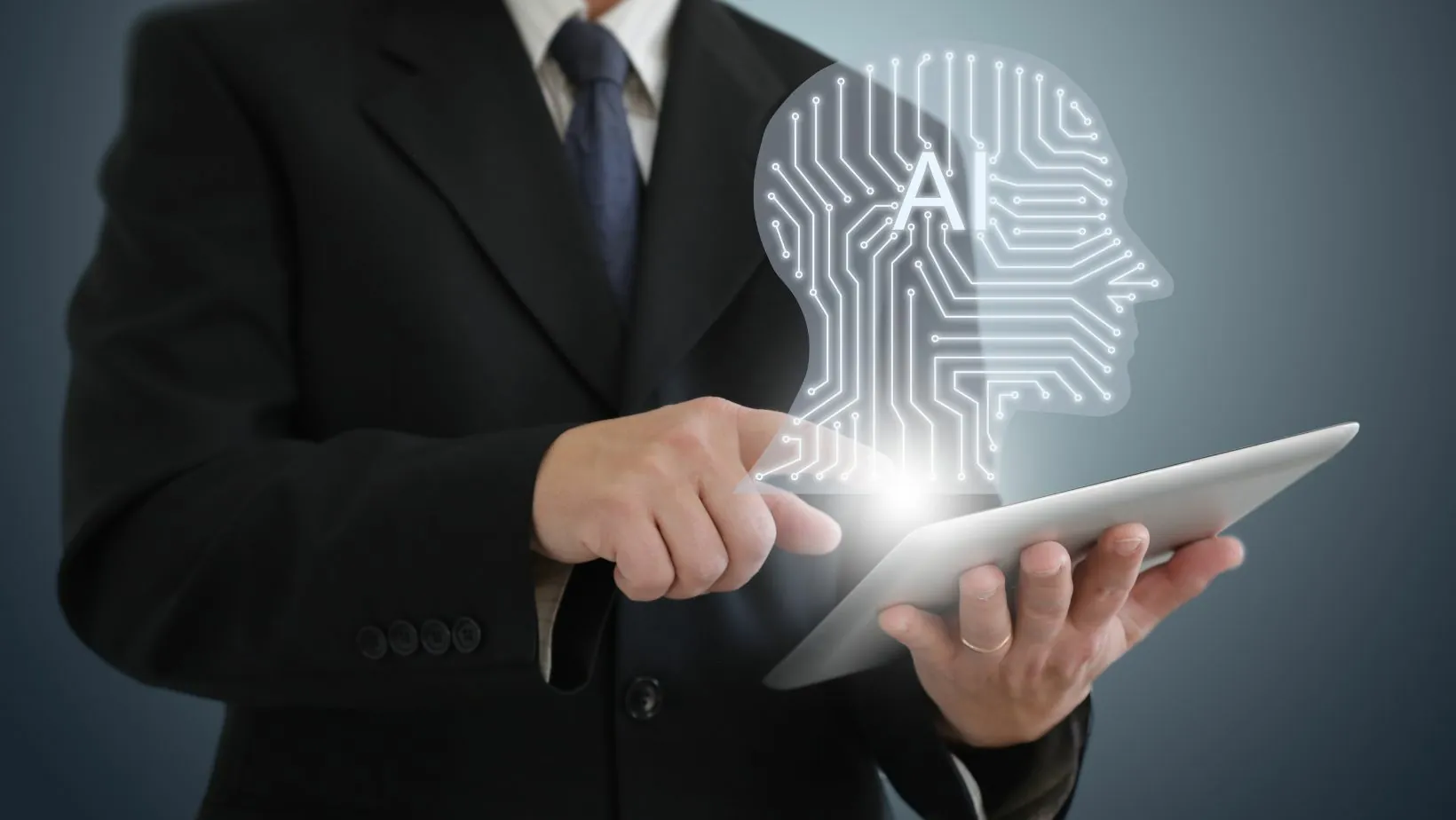Table of Contents
ToggleAutomated home entry is revolutionizing the way people access their living spaces. With advancements in technology, homeowners can now enjoy seamless entry methods that enhance security and convenience. Gone are the days of fumbling for keys or worrying about lost access cards.
Smart locks and keyless entry systems empower residents to unlock their doors with just a touch or a smartphone app. This innovation not only simplifies daily routines but also offers peace of mind, knowing that entry is secure and customizable. As more homeowners embrace these solutions, the future of home entry looks both smart and accessible.
Overview of Automated Home Entry
Automated home entry systems revolutionize access to residential properties, incorporating advanced technology for security and convenience. Smart locks replace traditional keys, allowing homeowners to unlock doors via smartphones, key codes, or biometric data. Systems integrate seamlessly with other smart home devices, enhancing overall security and control.
Keyless entry systems provide numerous advantages. Enhanced security features increase protection against forced entries. Remote access capabilities allow users to lock or unlock doors from anywhere, adding convenience for everyday use. Many systems offer activity logs, which track entry and exit times, providing critical data for homeowners.
Integration with home automation platforms further improves functionality. Homeowners can set schedules for locks, creating a tailored entry experience. Compatibility with voice-activated assistants enhances ease of use, allowing for hands-free operation. Automated notifications alert homeowners to unusual activities, reinforcing safety measures.
Automated home entry represents a significant shift in how individuals access their homes, combining convenience, enhanced security, and innovative technology to create a safer living environment.
Types of Automated Home Entry Systems

Automated home entry systems include various technologies designed to enhance security and convenience. The two primary types are smart locks and keyless entry systems.
Smart Locks
Smart locks operate electronically, allowing homeowners to unlock doors using smartphones, key codes, or biometric data like fingerprints. Many models integrate with home automation systems, enabling remote access and control. Features may include temporary access codes for guests, activity logs that track entry and exit times, and automated notifications for unusual activities. Compatibility with voice-activated assistants further enhances user experience, making entry as effortless as speaking a command.
Keyless Entry Systems
Keyless entry systems provide an alternative to traditional keys by utilizing keypad or touchpad access. Homeowners can create unique codes for different users, facilitating flexible entry options for family members and guests. These systems often include additional security features such as alarms, tamper detection, and integration with existing security systems. Some models offer mobile app functionality for remote management, enabling users to monitor and manage access from anywhere. Keyless entry systems streamline access and improve security measures with their advanced technology.
Benefits of Automated Home Entry
Automated home entry systems offer numerous advantages, significantly improving security and convenience for homeowners. The integration of smart technology transforms the traditional approach to home access.
Enhanced Security Features
Enhanced security features distinguish automated home entry systems. Smart locks often utilize encryption technology, protecting against unauthorized access. Biometric systems, such as fingerprint recognition, ensure that only authorized users gain entry. Many models include tamper alerts, notifying homeowners of possible security breaches. Remote monitoring allows users to check their property status in real-time and receive notifications of unusual activities. Activity logs track who entered and exited the home, providing a clear record for added peace of mind.
Convenience and Accessibility
Convenience and accessibility are key benefits of automated home entry. Homeowners can unlock doors using smartphones, keypads, or biometrics, eliminating the need to carry traditional keys. Temporary access codes provide guests with easy entry without compromising permanent keys. Integration with home automation systems allows users to create customized schedules for when doors lock or unlock automatically. Voice-activated assistance further simplifies the process, enhancing daily convenience. This streamlined access reduces daily hassles, ensuring homeowners can enter their spaces quickly and efficiently.
Challenges and Considerations
Automated home entry systems present several challenges and considerations. Addressing these factors is essential for homeowners contemplating an upgrade to this technology.
Cost Factors
Installing automated home entry systems incurs various costs. Homeowners must consider the initial purchase price of smart locks or keyless entry systems, which typically ranges from $100 to $400, depending on features and brand. Installation expenses can add another $100 to $300, especially if new hardware or wiring is necessary. Additionally, ongoing maintenance and potential subscription fees for advanced features, such as cloud storage or remote monitoring, factor into the overall expenditure. Budgeting for these costs ensures homeowners understand the financial commitment involved.
Technical Limitations
Automated home entry systems face technical limitations affecting their performance and usability. Connectivity issues can arise, particularly in areas with weak Wi-Fi signals, leading to accessibility problems. Some smart locks rely on battery power, necessitating routine battery replacements or potential lockouts when the battery dies. Compatibility issues with existing home automation systems may hinder seamless integration. Furthermore, software updates or system malfunctions can disrupt functionality, demanding ongoing attention and updates from homeowners to ensure optimal security and performance.
Future Trends in Automated Home Entry
Innovations in automated home entry systems will continue shaping the landscape of residential security and convenience. Emerging trends focus on enhanced integration, advanced technologies, and improved user experiences.
- AI-Driven Security: Artificial intelligence will play a crucial role in automated home entry. Systems will analyze user habits, recognize patterns, and adapt to individual preferences. They’ll enhance security by distinguishing between familiar faces and potential intruders.
- Biometric Advancements: Biometric technologies such as facial recognition and fingerprint scanning will evolve. Increased accuracy and speed in these systems will provide homeowners with seamless access while maintaining high-security standards.
- Smart Home Ecosystems: Integration with smart home ecosystems will expand. Systems will connect with various devices, including cameras, alarms, and lighting. This interconnectedness will allow for coordinated responses to security threats and improved convenience.
- Mobile App Enhancements: Mobile applications will receive significant upgrades. New features will include real-time monitoring, remote lock controls, and detailed activity logs. Applications will also support voice command functionalities for smarter home management.
- Sustainable Technologies: Energy-efficient designs will gain popularity. Solar-powered locks and systems with low-energy consumption will appeal to environmentally conscious homeowners, combining sustainability with security.
- Blockchain for Security: Blockchain technology will emerge as a method for secure access control. Decentralized data storage will enhance the integrity of user information and improve overall security against tampering.
- Customization and Personalization: Automated home entry systems will offer personalized settings. Homeowners will customize access schedules and notifications, tailoring responses based on specific needs.
- Subscription Services: New subscription models will emerge, covering ongoing system updates and maintenance. Homeowners will enjoy hassle-free management and enhanced security features without upfront burdens.
Investments in research and development will drive these trends. The adoption of automated home entry systems is set to grow as homeowners prioritize convenience, security, and integration within their living environments.
Automated home entry systems are reshaping how homeowners access their properties. The convenience and security offered by smart locks and keyless entry solutions make them an attractive choice for modern living. As technology evolves the integration of AI and advanced biometric features will only enhance these systems.
Homeowners should weigh the benefits against potential challenges to make informed decisions. Embracing this innovation not only simplifies day-to-day routines but also contributes to a safer home environment. The future of automated entry promises even greater advancements ensuring that convenience and security remain at the forefront of home technology.



